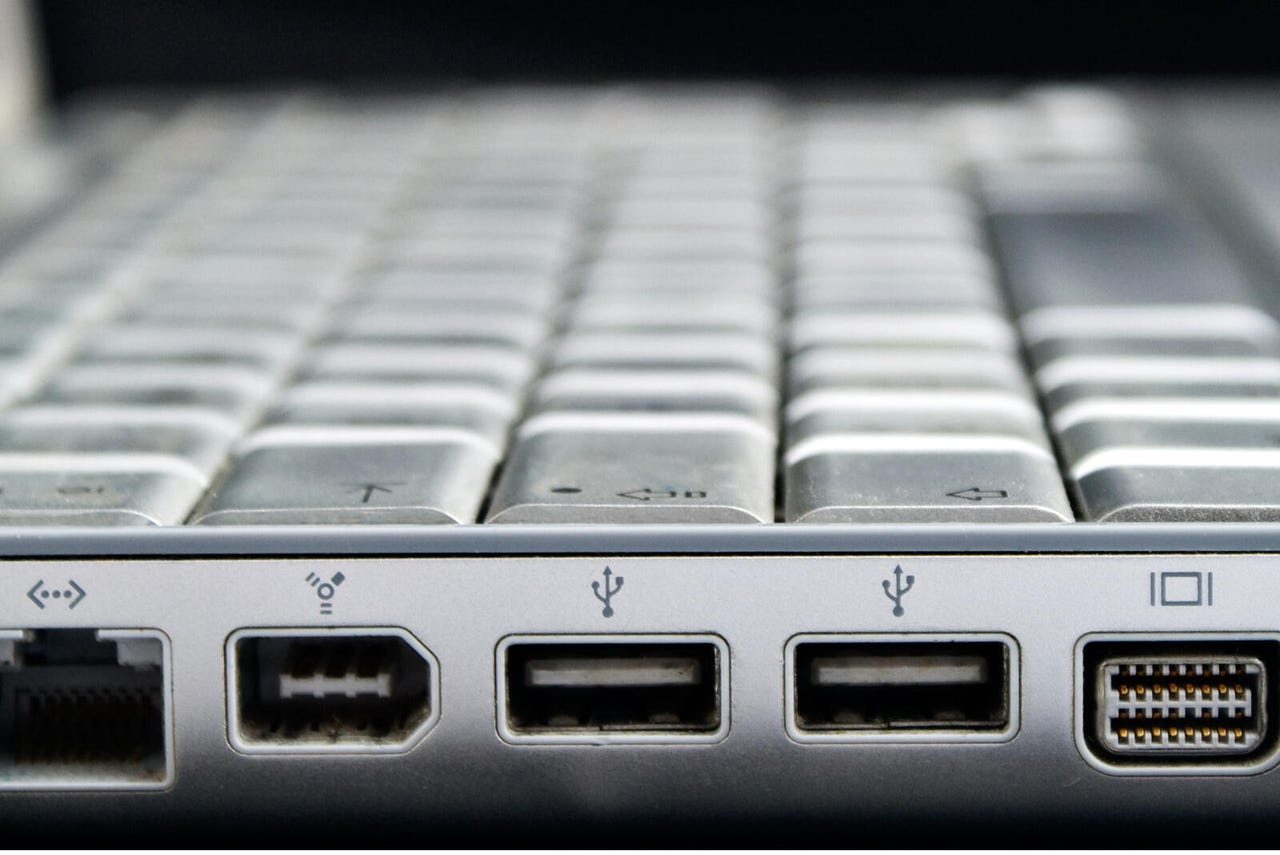Which is better, USB-C 3.1 gen 2 or Thunderbolt?


As noted last month the two main components of storage performance are latency and bandwidth. Low latency allow CPUs to juggle fewer outstanding I/Os, while high bandwidth moves the data faster. In the real world, latency is the more important number because most I/Os are16Kb or less, so transport time is negligible.
But most people find it easy to think about bandwidth - more better! - while latency is more abstract (900µs vs 650µs - huh?). Also, bandwidth is easier to measure. How much easier I found out while trying to answer the "which is better?" question.
ZDNET Recommends
Latency tools for an M1 MacBook Air
There aren't any GUI-based latency tools for the Mac, but I don't mind diving into the Terminal's zsh command line interface (CLI) that is standard on recent versions of macOS. I checked out three different CLI tools: fio, ioping, and iostat. Iostat requires the /proc filesystem, which isn't available on macOS, so that was out. Ioping looked promising, but damned if I could get it to work on external drives.
Which left fio. It doesn't measure latency directly, but it will give you IOPS (I/Os per second), which is roughly the inverse of latency. I say roughly because the I/O size and bandwidth affect IOPS.
For these tests I used a mix of reads and writes, about 75 percent reads and 25 percent writes, with queue depths of 8 and 16. As noted in my article about latency, bandwidth numbers are pretty meaningless with small transfers, so I will focus on the IOPS each drive achieved.
The fastest storage in a MacBook Air is the system SSD, in my case a 256GB drive. The average internal drive read IOPS were almost 30k, while the average write IOPS was almost 10k.
Compare that to a high end Thunderbolt SSD, the 2TB OWC Envoy Pro FX's average read IOPS of over 26k and write IOPS just shy of 9k. That's about a 12 percent difference, which few would notice in real life. Bottom line: a high-end Thunderbolt SSD will seem just as fast as the MacBook Air's system drive -- for a lot less than Apple charges.
That's pretty amazing.
USB
But what about a fast NVMe SSD on USB-C? I took a Crucial P5 1TB NVMe M.2 SSD mounted in a $30 Sabrent enclosure and ran the same tests.
The average read IOPS was 18k, while the average write IOPS were 6k. That's about two thirds the performance of the OWC Envoy. You'd notice the difference in I/O intensive work, but for a $30 enclosure, not bad.
Then, just for grins, I took an old Apple SSD salvaged from 2014 MacBook Air upgrade, mounted in another OWC USB M.2 enclosure, and ran the same test. Surprise! The little drive kicked butt.
Average read IOPS were almost 27k, while average write IOPS were almost 9k, matching the OWC Envoy Pro. Not bad for a 7-year-old SSD.
Thunderbolt 4 v USB-C showdown
But the real test is how the same drive did with each interface. And there was a real but marginal difference.
Placed in a $150 Thunderbolt 3 enclosure from eVolusion, the Crucial P5 achieved an average of more than 20k read IOPS and almost 7k write IOPS. These modest improvements over the $30 Sabrent USB-C enclosure, at a substantially higher price, hardly count as a win for Thunderbolt. It would have stung less had I bought the OWC Envoy Express Thunderbolt enclosure for $79.
So take a look at these two bandwidth benchmarks, one for the OWC Envoy Pro FX and one for the old MacBook Air SSD in an Envoy USB-C case. Remember, their IOPS performance was about equal.
USB-attached SSD
High-end Thunderbolt SSD bandwidth
Though the IOPS were similar, Thunderbolt's bandwidth was much greater. You don't need massive bandwidth to do a lot of small I/Os.
The take
Based on these tests, which is better: USB-C or Thunderbolt? Given the similar performance of the 2TB OWC Envoy Thunderbolt drive and the old Apple SSD in a different OWC USB enclosure I have to conclude: neither.
Today, with 40Gb/sec USB peripherals scarce, Thunderbolt 3 and 4 will reliably give you two to four times the bandwidth if you commonly work with large sequential files.
Since both USB-C 3.1 gen 2 and Thunderbolt have plenty of bandwidth for common use cases, what counts is the performance of the SSD. True, the Crucial P5 1TB SSD improved in the Thunderbolt enclosure, but not enough to notice in daily use.
Which to buy?
- If you have the money and are or may be working with gigabyte+ files such as video, high-res photos, biotech data, or music, Thunderbolt options will future proof your system.
- If you want to save money and need more storage for photos, text files, PDFs, and the like, pretty much any low-end USB-C SSD will meet your needs.
- If you must have the absolute best in storage performance, grab your wallet and max out your next Mac. Apple designs really good SSDs.
Comments welcome. By the way, Intel has always had 80Gb/sec Thunderbolt on their roadmap. I expect it within two years.